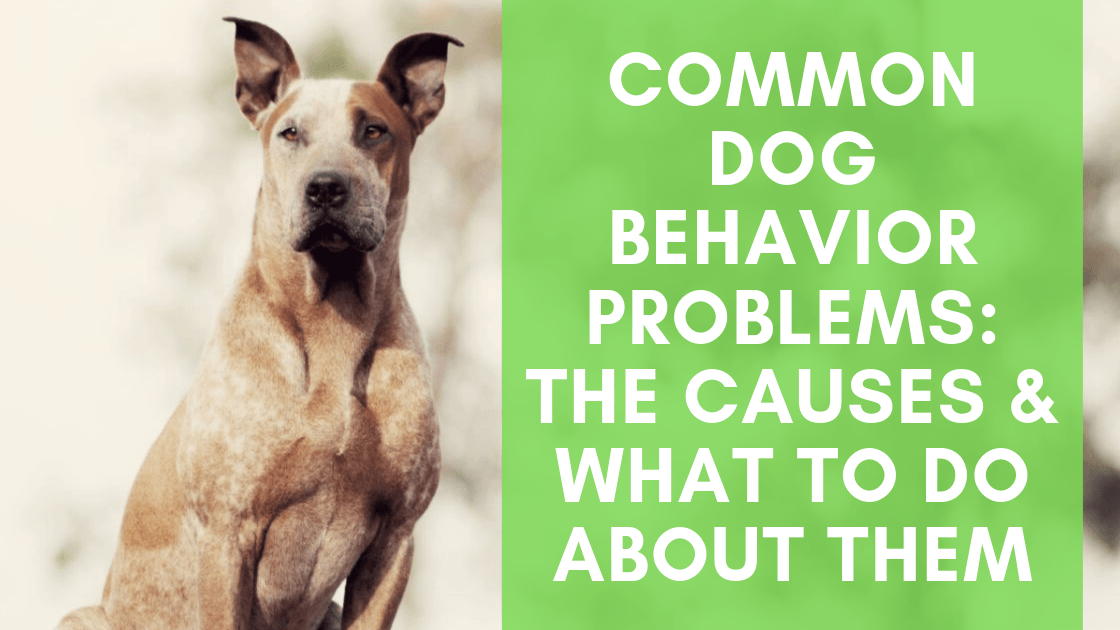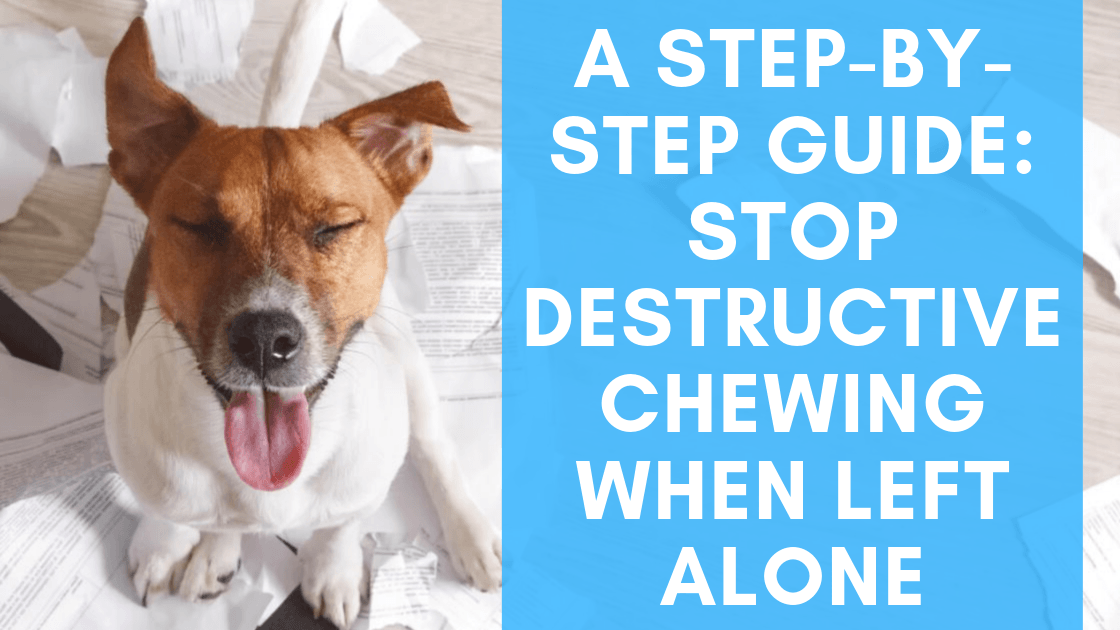
Puppies and new dogs getting used to their space have a tendency to get into just about everything. This can also be true with older dogs that are suddenly left alone for longer periods of time or aren’t getting adequate mental and physical stimulation.Bringing home your new puppy, or adopting an older dog, is an exciting time! But along with all the research you’ve done and acquired supplies, you need to make sure your home is totally dog proof.
Whether you’re planning to crate train your dog or not, dog-proofing is not a step to skip when it comes to preparing for your new family member. The most important things to consider when dog proofing are electrical cords, choking hazards, objects to chew, garbage, access to cabinets and human food, doors, house training, and (bonus!) your car.
Let’s make sure your home is a safe space for Fido to spend his days. Because even when you’re home with your dog, it’s important that there’s nothing for them to get into that could cause harm. This guide will also help you set your dog up for success with things like learning not to chew, jump on counters and tables, house train, and tackling other common dog behavior problems.
1. Electrical Cords
One of the most important dog proofing things you can do is making sure electrical cords aren’t accessible to your dog. I have heard more than one terrifying story about puppies getting electrocuted—even while under the supervision of their owner! But this is an accident that you can avoid.
Most obviously, don’t leave chargers plugged into outlets with dangling cords. More specifically, make sure cords are tucked behind furniture, covered, or out of reach.
To help with this task you can:
- Attach cords to the tops of desks and dressers using electrical tape
- Cover cords along the base of your wall with duct tape, electrical tape, or specially designed wire covers/cable sleeves
- Gather cords using zip-ties to keep them organized and get the slack wire off the ground
- Relocate lamps onto furniture that covers the outlet
- Temporarily use only overhead lights while your puppy grows out of the chewing stage
2. Choking Hazards
While you don’t want your dog to chew any non-dog items, small objects that pose choking hazards or could be swallowed and cause a blockage are especially dangerous. As you dog proof your home my number one tip is to get down to their level. Crawl or lay on the ground and see what small objects catch your eye.
If you have children, small toys can look especially appealing to dogs. Consider utilizing baby gates to block off a room, or rooms, where children’s toys can be left out, and your dog cannot access them. This takes the pressure off of you, your children, and your dog.
3. Chewing Objects
The fact of the matter is, dogs (and puppies!) chew. So, it’s important to remove items from their access that might serve as their next chew toy. Keep shoes, socks, and clothing items stowed away in closets and dressers.
Place other chewable items out of reach. If you have a large breed dog like I do, don’t consider the counter or table a safe enough place. Push things to the back of counters, use the top of the fridge and other high shelves.
Common household objects that dogs love to chew include:
- Shoes
- Socks, underwear, hats, gloves, etc.
- Remote Controls
- Wooden and plastic spoons, utensils, and cookware (I know this one from experience)
- Children’s toys
- Glasses
- Hairbrushes
- Handheld tools with soft or rubber handles
- Sports equipment
- Paper towel and toilet paper rolls
- Recycling items
To help with unwanted or destructive chewing, be sure to set your dog’s space up with lots of items that are safe for them to chew. Our toys for tough chewers are totally safe and will last a lifetime. You can also try elk or deer antlers, which last far longer than average bones designed for dogs.
Related reading: How to Proper Supervise your Dog with Chew Toys, How to Choose the Safest Toys for Your Dog
4. Garbage
Don’t learn this one the hard way! Keep your garbage away and out of your dog or puppy’s curious mouth right from the start. Garbage seems to be an ongoing issue for many dogs. Even my older, well-trained dogs can’t resist digging for tossed food when the garbage is left out or the lid is askew.
My aunt had a dog that was relentless with the garbage. It got to the point where they invested in a special dog-proof garbage can that they actually bolted to the wall to keep him out!
Dog proofing and garbage tips:
- Invest in a high-quality dog-proof garbage can. Many families can get away with a step-to-open garbage can (our very smart German Shepherd figured this one out pretty quickly…so be warned!)
- If possible, keep your kitchen trashcan under a cabinet or inside a free-standing piece of furniture that holds garbage cans
- Put child-locks on cabinets that house trashcans if your pup is especially persistent
- Don’t forget about trashcans you might have in the bathroom, office, bedrooms, etc.
5. Cabinets
Cabinets can often pique the interest of young puppies or food driven older dogs. Cleaning products and other household chemicals kept in cabinets can also be very harmful if ingested.
Better to err on the side of caution and put child-locks on cabinets with cleaning products, food, garbage, or other things you don’t want to risk your dog getting into.
6. Human Food
We just talked about keeping cabinets with food closed and locked, but as you dog proof, especially for large-breed dogs, be aware of food that’s accessible on the counter too.
Don’t leave snacks, fruit, veggies, leftovers, serving plates or unwashed dishes out on the counter where they might tempt your dog. For more advice on curbing counter surfing (among other dog behavior issues) head here.
7. Doors and Windows
Some dogs, and even specific breeds are known escape artists. As you dog proof and adjust to life with a dog, it’s important that windows not be left open and doors are shut tightly when you leave.
Hanging reminder signs on the door to close the door promptly and not allow the dog out can be helpful to you and your guests
If you have sliding doors, or doors with horizontal handles, clever dogs can quickly learn to let themselves in and out. Take measures to keep your dog in when they need to be. This might involve switching out your door’s handle style or installing an extra lock. We installed a high lock on our sliding door to keep our husky from escaping.
8. House Training
While dog-proofing your home, you should take some steps to set your new puppy up for house training success as well. Utilize gates to confine your dog to specific areas of the house. For example, we didn’t let our dogs upstairs until we knew they had potty-training down.
Other ways to set your home up for house training success:
- Roll up area rugs and carpets for the time being
- Hang a bell from the door and ring it every time you bring your dog out to pee (our Lab caught on to this concept very quickly as a puppy and would nose the bell anytime he needed to go out)
- Have cleaning supplies easily accessed (in a spot puppy can’t get to, of course)
- Invest in a crate to use when you need to leave puppy unattended
BONUS: Your Car
While this article is about dog-proofing your home, chances are, Fido is going to be spending time in your car too. Consider getting a water-proof dog seat cover to protect your car after a fun day at the dog park or a muddy hike.
Because we have small children our car always seems to have snack remnants and little plastic toys littering the floor. We installed a dog barrier that keeps our dogs confined to the trunk of our SUV. This also keeps the car clean when they are wet or muddy in the car.
While I haven’t personally used it, this product creates a barrier between the front two seats. I know this is a huge problem for a lot of people. Their dog loves to stand with his head right between the owners and then comes flying forward as soon as you stop short. Problem solved!
Time to get your home dog ready!
With these tips, you are ready to dog proof your home. Be vigilant in your dog proofing efforts from the start and it will be easy to maintain a safe space for your dog. You’ll want to go through every room of the house your dog will have access to and put up gates to keep them out of unsafe rooms.
You might also have to train yourself and your family into habits that will keep your dog safe and out of trouble. For example, always closing doors to the outside, putting away shoes and chewable items, cleaning up small toys, and not leaving food in your dog’s reach are a few behaviors to put into place from the start.



